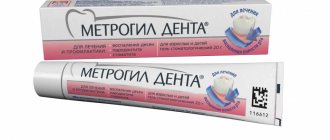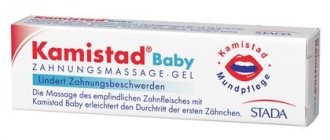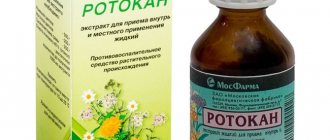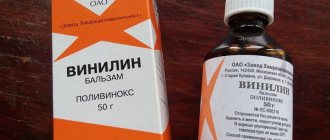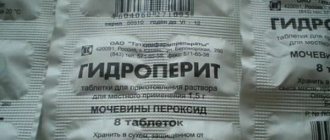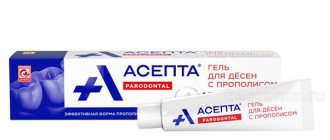A pregnant woman should take extra care of her health. During this period, you need to carefully choose your diet, protect yourself from infections, and monitor your well-being. Viral infections are the main causes of sore throat. If measures are not taken to eliminate them in time, you may be subject to complications. One of the safest remedies against infection is hexaspray.
Features of the drug Hexasprey
Hexasprey is a product of a French manufacturer. It is intended to treat bacterial infections that are accompanied by discomfort in the throat and nasopharynx. The drug is effective for stomatitis, fungus, candidiasis, herpes and inflammation.
A pregnant woman should not use anti-infection medications on her own. Only after visiting a doctor and prescribing suitable medications can treatment begin. Hexaspray effectively fights various microbes: Streptococcus spp., Staphylococcus spp., Corynebacteriuv spp. These microbes negatively affect the microflora of the oral cavity, causing unpleasant and even painful sensations.
Special instructions for the use of Hexasprey
Using the drug for more than 5 days may cause disruption of the normal microflora of the oral cavity. The simultaneous use of other antiseptics should be avoided, since undesirable interactions (antagonism, inactivation) are possible. If the patient’s condition has worsened, in particular the body temperature has increased or there has been no improvement within 5 days, it is necessary to re-examine and change the treatment tactics. During pregnancy and breastfeeding. Adequate and well-controlled studies of the safety of the drug during pregnancy and breastfeeding have not been conducted.
Pharmacological properties
Hexaspray has anti-inflammatory, analgesic, antiseptic and antifungal effects. Absorption of hexaspray from the oral mucosa does not occur immediately, which ensures long-term exposure to the active substances. At this time, biclotymol and components kill pneumococci, streptococci, staphylococci and Haemophilus influenzae, destroying the walls of harmful cells. It is the active component of the drug that allows you to relieve pain and symptoms of inflammation.
Hexaspray is not systemically absorbed (absorbed) and is not subject to metabolic reactions. The drug is slowly absorbed by the mucous membrane.
Pharmacological properties of the drug Hexasprey
Antiseptic, analgesic, anti-inflammatory drug for topical use in otolaryngology, containing biclotymol (2,2-methylene-bis-(6-chlorothymol)). It is a phenol derivative with antibacterial activity against staphylococci, streptococci, micrococci and corynebacteria. The mechanism of action is due to the ability to coagulate proteins of microbial cells. In addition to antibacterial, it also has anti-inflammatory and local anesthetic effects. The drug is absorbed very slowly through the mucous membrane, which ensures its long-term presence in the oral cavity.
Active substance of hexaspray
The main active ingredient is the antiseptic biclotymol. It allows for antibacterial therapy in combination with anti-inflammatory effects. Biclotymol has low toxicity (compared to other similar drugs), so it is safe for treating oral infections in pregnant women. It is effective even in the treatment of diseases caused by mutating strains resistant to penicillin, oxacillin, spiramycin, chloramphenicol and rifampicin.
The high effectiveness of biclotymol against three strains of staphylococcus and four strains of streptococcus was noted, which leads to widespread use in otolaryngology and dentistry. The substance does not help with facultative anaerobic bacteria, Escherichia coli and Pseudomonas aeruginosa.
Biclotymol does not affect the composition of the blood and the functionality of liver cells, even with long-term use. The lungs, kidneys, small intestine and adrenal glands are not affected by taking products with biclotymol.
Hexasprey
Hexasprey (active ingredient - biclotymol) is an antiseptic drug for topical use in otolaryngological practice, which has an analgesic and anti-inflammatory effect. This antimicrobial drug is used for infectious and inflammatory lesions of the mucous membrane of the oral cavity, pharynx and larynx. Its spectrum of action covers such traditional pathogens of infections of the upper respiratory tract as staphylococci, streptococci and corynebacteria. Discomfortable sensations in the throat, including soreness and pain when swallowing, are a traditional complaint heard in the office of a local therapist during the cold season. And the reason for this is not only hypothermia, but also the invasion of the body through the “entrance gate” of the oral cavity by an army of bacteria and viruses. Therefore, in this “icy winter season,” the question of choosing a drug to eliminate a sore throat, which is the first to take on a bacterial-viral attack, becomes more relevant than ever. One of the most common seasonal diseases during this period is pharyngitis. As morbidity statistics show, about 70% of catarrhal pharyngitis develop as a consequence of a viral infection. At the same time, a viral lesion of the pharyngeal mucosa in most cases is followed by a bacterial lesion: the immune system, weakened as a result of a viral attack, is not able to mobilize in time to eliminate pathogenic bacteria that enter the body. Therefore, it is very important, even at the first alarm bells (dryness and sore throat, pain when swallowing), to immediately begin complex drug therapy aimed at eliminating both viral and bacterial pathogens. Mild forms of infections are usually treated with local antimicrobial, analgesic and anti-inflammatory drugs. All these qualities are inherent in the original drug Hexaspray from the French pharmaceutical industry, which is suitable for both pathogenetic (elimination of the cause of the disease) and symptomatic (elimination of signs of the disease) treatment. The active ingredient in hexaspray, biclotymol, has the ability to coagulate proteins of bacterial cells, exhibiting antimicrobial activity against traditional pathogens of acute respiratory infections.
Hexaspray is available in the form of an aerosol, which ensures ease of use and rapid onset of the therapeutic effect, because the rate of absorption of the active component through the mucous membrane increases. It should be noted that hexaspray does not contain dyes that can cause allergic reactions.
Another aspect that increases the relevance of the search for new drugs for the treatment of infectious and inflammatory diseases of the mucous membrane of the oral cavity, larynx and pharynx is the irrational use of antibiotics, as a result of which many bacterial strains resistant to antibiotic therapy have appeared. As noted above, hexaspray was proposed as one of these drugs, which, in addition to the classic “staphylococcus + streptococcus” combination, extends its effect to, among other things, Neisseria, Corynebacterium and Haemophilus influenzae. This drug has both bacteriostatic and bactericidal effects, i.e. it not only suppresses the growth and development of microorganisms, but also destroys them, destroying the mucopolysaccharide shells of bacteria within 10 minutes after application. In one of the clinical trials, the effectiveness of hexaspray was assessed in patients suffering from acute pharyngitis, complicated by chronic glossitis and tonsillitis. All patients of the main group injected the drug three times a day for 5-7 days. Patients in the control group received traditional drug treatment in such cases. When analyzing the results of the study, it was found that a rapid and pronounced regression of inflammatory symptoms was achieved in 92% of patients in the main group and in 64% of patients in the control group, which confirmed the greater effectiveness of hexaspray in comparison with standard treatment methods.
When using hexaspray, it is not recommended to use other drugs for topical use in the oral cavity. If after 5 days of drug therapy there is no significant improvement in the condition, you need to consult a doctor so that he can make adjustments to the treatment tactics.
Additional components
The structure of Hexaspray aerosol is a suspension, yellowish and homogeneous with an anise aroma. The drug is available in a glass bottle with a volume of 30 g. The bottles are sold in cardboard packages.
Hexaspray includes:
- purified water;
- benzyl alcohol;
- disodium edetate;
- sodium saccharin;
- methylparaben;
- sodium carboxymethylcellulose;
- lecithin (soy type);
- glycerol;
- microcrystalline cellulose;
- ammonium glycyrrhizinate;
- ethanol 95%;
- anise oil
Indications and contraindications
The long-term effect of the drug, ensured by the slow absorption of active substances, reduces toxicity. This makes it possible for pregnant women with bacterial infections to inhale hexasprey. Hexaspray is prescribed for pregnant women for an inflammatory or infectious process that affects the oral cavity and nasopharynx.
To achieve a more lasting effect, it is recommended to take only minimal doses of the product. This does not reduce activity or effectiveness, but prolongs the period of action.
Indications for hexaspray during pregnancy:
- glossitis (inflammation of the tissues of the tongue, which is manifested by changes in structure and color);
- gingivitis (an inflammatory process in the gums that does not violate the integrity of the connections between the teeth and gums);
- periodontitis (inflammation of the periodontium, destroying the alveolar processes of the jaw);
- periodontitis (inflammation at the roots of teeth);
- candidal stomatitis (fungal inflammation of the oral cavity);
- ulcers and wounds of the mucous membrane;
- irritation or injury to soft tissues and mucous membranes when wearing braces and dentures;
- ENT diseases of an infectious or inflammatory nature (tonsillitis, laryngitis, pharyngitis, etc.);
- complication after tooth extraction or surgery;
- trauma during dental manipulation (gingivectomy, curettage, gingivoplasty).
Contraindications:
- age under 2 years (increased risk of laryngospasm);
- presence of allergies to components;
- hypersensitivity to biclotymol.
special instructions
With an increase in the period of use of hexalysis for 5 days, the development of dysbiotic disorders in the oral cavity and the likelihood of the spread of a bacterial or fungal infection are possible.
Due to the likelihood of undesirable interactions such as inactivation or antagonism, it is necessary to refrain from combined use with other topical antiseptics.
If the patient’s condition worsens, for example, fever develops, or if there is no positive dynamics for 5 days, a re-examination of the patient is required, followed by a revision of the therapeutic strategy.
There is no information on the safety of the drug during pregnancy and lactation due to the lack of adequate and well-controlled studies involving these categories of patients.
There was no observed effect on reaction speed when operating vehicles or other machinery.
Features of application
Pregnant women should take any medications with caution, even though some medications like Hexaspray are relatively safe. The instructions for the medicine do not prohibit inhalation during pregnancy and lactation.
Before treatment, you need to know that complete and adequate studies of the safety of hexaspray for pregnant women have not been conducted. Therefore, inhalations can be carried out only after consultation with a doctor. For each patient, the doctor establishes an individual course of treatment.
Hexasprey therapy does not depend on food intake. To carry out full treatment, it is enough to carry out inhalation three times a day. Inhalation consists of two injections of the drug. When using, you need to hold the bottle vertically. Shake the bottle before spraying.
The drug can only be used topically; hexaspray can only be sprayed several times a day. It is advisable to first treat one wall of the oral cavity, then the other. After spraying, do not rinse your mouth and throat, swallow saliva, or eat food for 15 minutes. The duration of therapy should be determined by the attending physician.
The use of hexaspray during breastfeeding should be discussed with your doctor. Most often, during lactation the drug is prescribed only when absolutely necessary.
Typically, pregnant women are prescribed up to 10 days of therapy. Otherwise, after this period, an additional doctor’s appointment is required. If after five days of treatment with hexaspray there is no effect, malaise occurs, you need to change the drug or dosage. When using hexaspray, it is prohibited to use any other local antiseptics.
Note!
Description of the drug Hexasprey spray oromuk. 750mg fl. 30g on this page is a simplified author’s version of the apteka911 website, created on the basis of the instructions for use.
Before purchasing or using the drug, you should consult your doctor and read the manufacturer's original instructions (attached to each package of the drug). Information about the drug is provided for informational purposes only and should not be used as a guide to self-medication. Only a doctor can decide to prescribe the drug, as well as determine the dose and methods of its use.
Overdose and side effects
Judging by the reviews of patients, the use of hexaspray during pregnancy can result in different consequences. For some, the drug helps effectively, while others do not notice any effect. In most cases, hexaspray promotes pain relief, facilitates swallowing, and reduces body temperature.
Due to the lack of systemic absorption, the risk of overdose is minimized. In case of accidental ingestion of hexaspray, immediate gastric lavage is recommended. After the procedure, you need to take enterosorbents (activated carbon and others).
The use of hexaspray is rarely accompanied by unpleasant sensations. Most often, the drug provides pain relief in the near future after use.
Many patients report an effect within five days of therapy for oral infections. A small percentage of women experience negative side effects: nausea, swollen lips, increased salivation, erythema (dilation of capillaries causing severe redness of the skin), rash, urticaria, Quincke's edema (rare).
Analogues of hexaspray for pregnant women
The cost of hexaspray averages 250-300 rubles. The drug is available without a prescription at any pharmacy. If it is impossible to purchase the product, you can use its analogues. During pregnancy, the appropriateness of each drug should be discussed with your doctor.
Hexaspray analogues:
- Hexoral. The product provides an antiseptic, analgesic, antimicrobial, hemostatic, enveloping, deodorizing effect. The active substance is hexetidine. Like hexaspray, it destroys the walls of pathogenic microorganisms. The drug is available in the form of a solution and an aerosol. There is no evidence of the effect of hexoral on the fetus due to the difficulty of studying the effects of the components on the placenta and breast milk.
- Efizol. The drug has antifungal, antibacterial and antiseptic effects. Efizol is effective at alkaline pH. The active substance is dequalin chloride, bactericidal and fungistatic (stops the growth of fungi) quinoline. The drug is available in the form of lozenges. Use during pregnancy is permitted.
- Falimint. The remedy is more suitable for suppressing a non-productive cough. The analgesic effect is insignificant, in contrast to the antiseptic and antiemetic. Available in the form of dragees.
- Yox. The active ingredients of the drug are povidone-iodine and allantoin. The first gives a bactericidal, immunostimulating, mucolytic, proteolytic effect. The second reduces toxicity from iodine. Aerosol during pregnancy is used only if absolutely necessary.
- Inhalipt N. The product has an antibacterial, anti-inflammatory, cooling, and distracting effect. Active ingredients: soluble streptocide, sodium norsulfazole. Available in spray form.
- Strepsils Plus. Antifungal, antimicrobial, analgesic, anesthetic. The active substance 2,4-dichlorobenzyl alcohol has a bactericidal effect due to the dehydration of harmful microorganisms. Amylmethacreazole destroys protein in microbial cells. Strepsils is recommended for respiratory tract disease complicated by fungal infection. The drug is approved for breastfeeding.
- Grammidin. The effect of the drug is ensured by the antibiotic gramicidin. It enhances the permeability of bacterial walls. The advantage of the product is its effective effect on all pathogens of infections and inflammations of the oral cavity. During pregnancy, it should be taken only when absolutely necessary.
- Theraflu. Complex analgesic, antipyretic, decongestive, antiallergic drug. May produce a weak anti-inflammatory effect. The active substances are paracetamol, phenylephrine, pheniramine maleate. Available in powder form for solution. Pregnant women should take with caution.
- Bioparox. An inhalation analogue of hexaspray with fusafungine, which is a polypeptide antibiotic. The product gives a pronounced anti-inflammatory and bacteriostatic effect.
- Stopangin. Antimicrobial, antifungal, anti-inflammatory, enveloping agent. Contains hexetidine, methyl salicylate and natural oils. It is not advisable to take before the 14th week of pregnancy.
The minimal toxicity of hexaspray and its high efficiency make it possible to carry out antimicrobial therapy without harm to the fetus. The instructions for the drug contain an addition stating that the drug does not pose a risk to the pregnant woman and baby.
Sources used:
- Professional oral hygiene in modern dentistry / Oksana Almazovna Gulyaeva, Rais Timergaleevich Bulyakov und Tatyana Stepanovna Chemikosova. - M.: LAP Lambert Academic Publishing, 2014.
- Medicines in dentistry: monograph. / I.K. Lutskaya. - Moscow
- Medicines in dentistry. Directory / L.N. Maksimovskaya, P.I. Roshchina. - M.: Medicine, 2001.

